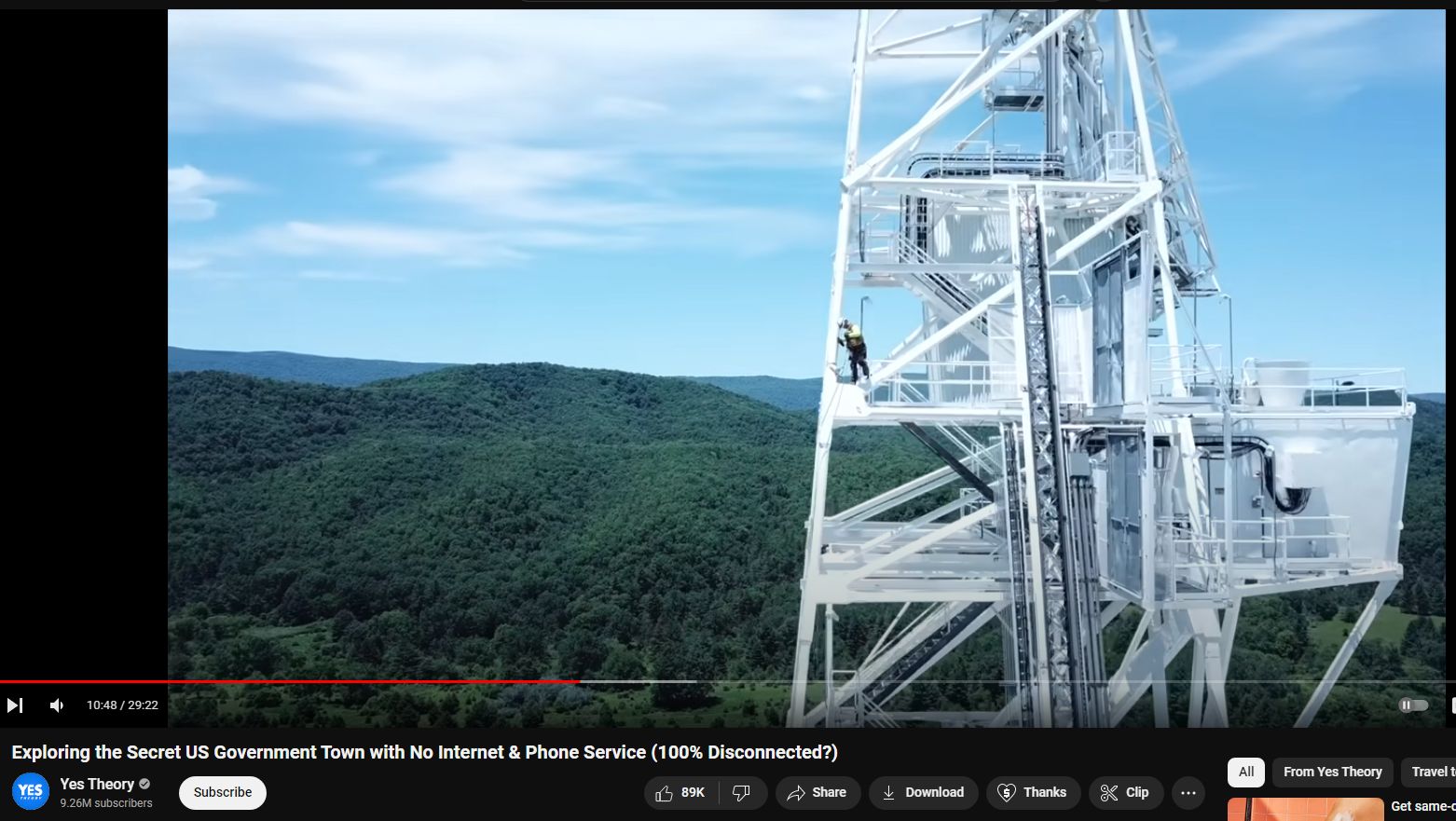Complete Inverse of Hip Hop Rap
The song at 8:50 is icing on this cake. “It smells intelligent.” ~21:40 in . More music at 27:00 in
“The unintentional [RF microwave] detox we experienced felt truly refreshing…” ~28:15 in

The YouTube video titled “Exploring the Secret US Government Town with No Internet & Phone” by Yes Theory delves into the enigmatic community of Green Bank, West Virginia. This town is renowned for its strict prohibition of wireless signals, including Wi-Fi and cell phones, due to the presence of the Green Bank Observatory, which houses one of the world’s largest fully steerable radio telescopes.
Green Bank’s Unique Environment
Green Bank is situated within the National Radio Quiet Zone (NRQZ), a 13,000-square-mile area established in 1958 to minimize radio frequency interference for the observatory’s sensitive equipment. This designation mandates the absence of wireless transmitters, resulting in a community that operates without modern wireless technology.
Daily Life Without Wireless Technology
Residents of Green Bank adapt to a lifestyle reminiscent of the pre-digital era. Communication relies on landline telephones and face-to-face interactions. Internet access is available but limited to wired connections, and the use of microwave ovens is restricted due to potential interference. This unique environment fosters a close-knit community where personal interactions are paramount.
Health Implications and Electromagnetic Sensitivity
The town has become a haven for individuals who suffer from electromagnetic hypersensitivity (EHS), a condition characterized by adverse reactions to electromagnetic fields. These individuals report relief from symptoms in Green Bank’s low-emission environment, though the medical community remains divided on the legitimacy of EHS as a diagnosable condition.
Technological Paradox
Green Bank presents a paradox where cutting-edge scientific research coexists with a deliberate avoidance of modern consumer technology. The observatory’s advanced radio telescopes require an environment free from electromagnetic interference, necessitating the town’s unique restrictions. This juxtaposition highlights the complex relationship between technological advancement and its societal implications.
Conclusion
Green Bank, West Virginia, offers a compelling case study of how technological requirements can shape community lifestyles. The town’s commitment to maintaining a radio-quiet environment for scientific research has cultivated a distinctive way of life, attracting those seeking refuge from electromagnetic exposure and prompting reflection on the pervasive presence of wireless technology in contemporary society.
